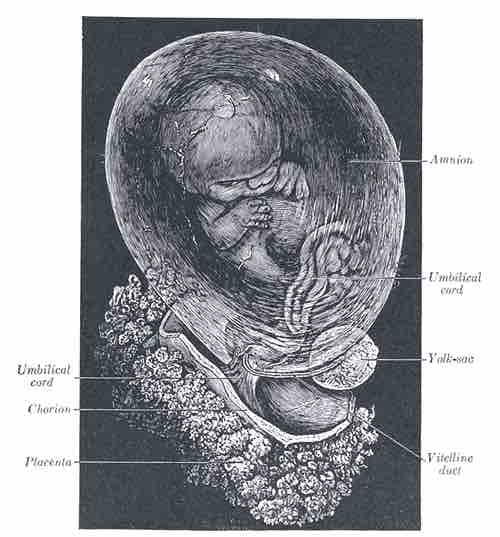The amnion is a closed sac appearing in the inner cell mass as a cavity. This cavity is roofed in by a single stratum of flattened, ectodermal cells called the amniotic ectoderm. Its floor consists of the prismatic ectoderm of the embryonic disk.
The continuity between the roof and the floor is established at the margin of the embryonic disk. Outside the amniotic ectoderm is a thin layer of mesoderm (continuous with that of the somatopleure), which is connected by the body stalk with the mesodermal lining of the chorion.
When first formed, the amnion is in contact with the body of the embryo, but by about the fourth or fifth week, amniotic fluid (liquor amnii) begins to accumulate within it. This fluid increases in quantity, causing the amnion to expand and ultimately to adhere to the inner surface of the chorion so that the extra-embryonic part of the coelom is obliterated.
This increase continues up to the sixth or seventh month of pregnancy, after which it diminishes somewhat. At the end of pregnancy, it amounts to about one liter.
The amniotic fluid allows some free movement for the fetus during the later stages of pregnancy and also diminishes the risk of injury. It contains less than two percent solids, and consists mainly of urea and other extractives, inorganic salts, a small amount of protein, and, frequently, a trace of sugar.
Note: That some of the liquor amnii is swallowed by the fetus is proved by the fact that epidermal debris and hairs have been found among the contents of the fetal alimentary canal.

Amnion
The human fetus is enclosed within the amnion.